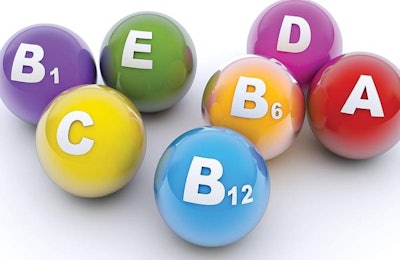
During times of crisis, such as the current one on vitamins A and E, it is always not a good idea to start thinking how to rationalize vitamin levels (typical panic reaction). Such exercise requires a careful study of relevant circumstances and a step-wise approach toward levels that guarantee animal health and profitability. Some, however, have accepted the norm that vitamins don’t cost that much anyway, and, as such, they have opted for supra-normal levels for reasons that are not related to pure nutrition. Others continue to regard National Research Council (NRC) levels as "outdated" and do not acknowledge modern research that has demonstrated higher levels are not necessarily needed. At any rate, we find a thousand excuses (some valid, too) to use high levels of all vitamins — except when some become as expensive as has happened with vitamins A and E, a story very well-covered in media all over the world. So, as everyone is looking for quick solutions, here’s my take.
Understand what these vitamins do in the body and why we use them.
First, do not reduce vitamins levels now. That would be the worst possible solution, as a haphazard and quick remedy may cause more damage than good. Instead, understand what these vitamins do in the body and why we use them, because all vitamins have metabolic roles that are unique and cannot be replaced by any other vitamin or substance. If I were to place a figure on these absolutely minimum essential levels, I would still go with NRC (2012 for pigs, 1994 for poultry). These levels are based on sound research.
Second, consider the fact that vitamin A (in the form of beta-carotene) and vitamin E have strong antioxidant roles. In my opinion, the levels we use in practice above those recommended as minimal by NRC are for this purpose: antioxidation. Thus, I would replace the current levels above NRC with other antioxidants (less expensive), and for that I would opt for natural products such as those from grape seeds, rosemary and olive leaves — just to mention a few. Keep in mind, some extracts may cost you as much as those pure vitamins if their correct efficiency rate is used. Powders may offer a more economical solution, but you need a reputable supplier who knows how to handle such products. And, do not forget, most phytogenics who belong to the phenols family possess some antioxidant activity. So, have a good look in your formulas just in case you already use them in one way or other.
Third, please note that feed antioxidants (the likes of ethoxyquin and BHT) are for the feed, not the animal. So, these antioxidants are not good replacements for the antioxidant activities of certain vitamins within the animal’s organism.

















